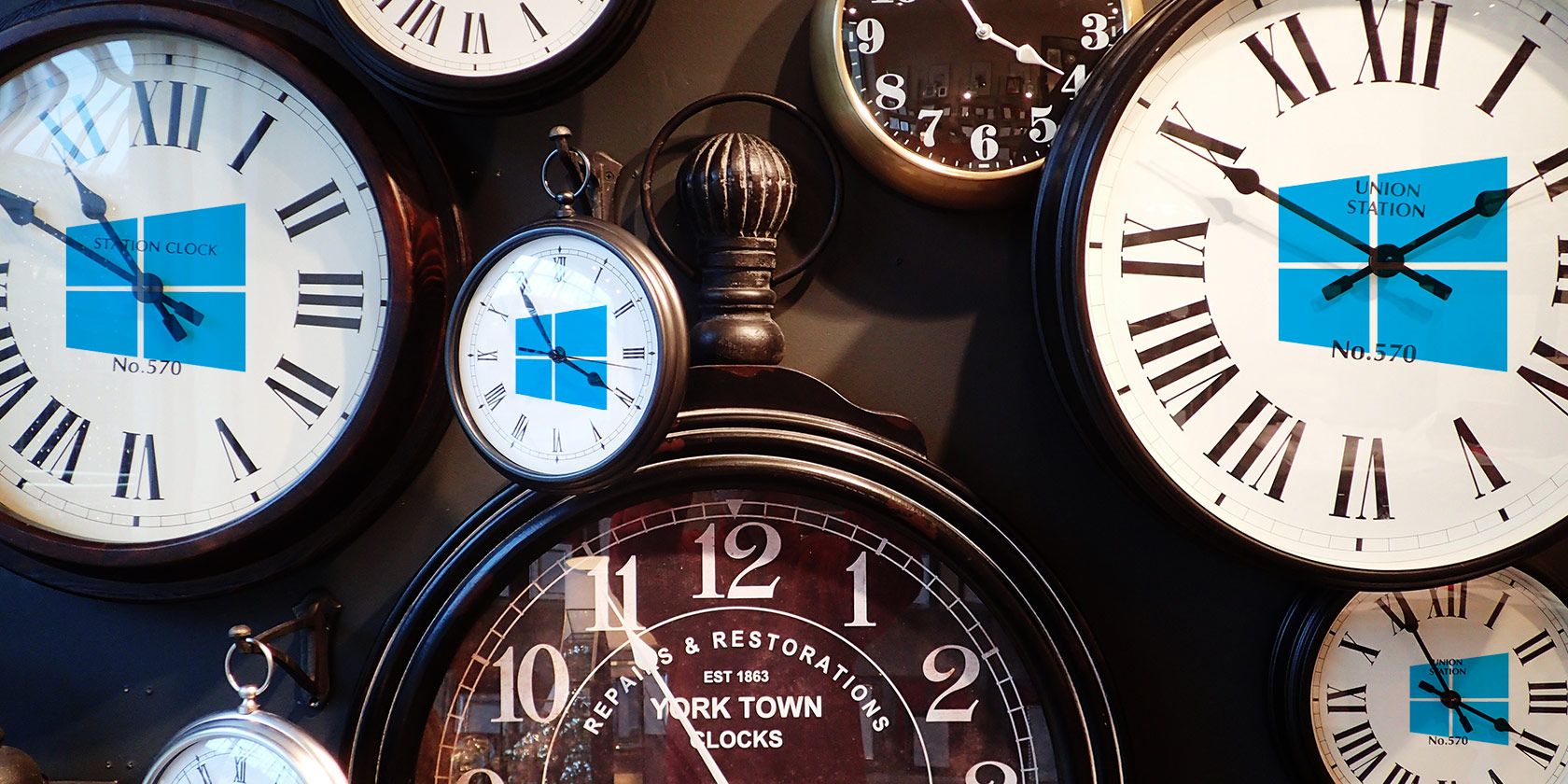
Clocks showing the correct time is something we take for granted. When the Windows time is wrong, it can interrupt scheduled tasks or lead to weird errors. Moreover, a time that’s off by minutes or even hours can make you run late or miss appointments.
Yes, you can sync your Windows time with a remote server to keep the exact time. But note that a Windows clock that keeps losing its time could hint towards a more serious issue. Let us show you what the underlying causes may be and how you can fix them.
1. CMOS Battery

This is the most likely culprit, especially if your computer is a little older.
The CMOS battery sits on your computer’s motherboard and provides power to the Complementary Metal Oxide Semiconductor (CMOS) chip. This chip stores information about the system configuration, including the date and time. The CMOS battery makes sure the chip can store this data even while the computer is turned off and not hooked up to power.
If the battery goes bad, the chip starts losing information and one of the symptoms is that your Windows computer no longer maintains its time and date.
Replacing the CMOS battery is pretty easy. You just have to turn off your computer, ground yourself, open the case, find out which type of battery (step 3 in the linked guide) sits on your motherboard, go buy it, start over, and exchange the battery. Follow the links to the keywords for articles on the respective steps.
2. Time Zone
This is an easily fixed cause for when your computer clock is off by one or more hours.
Windows may simply be set to the wrong time zone and every time you fix the time, it resets itself to that time zone when you reboot. If the minutes are correct and only the hour is bad, that’s probably the issue you’re dealing with.
To fix your time zone in Windows 10, right-click the system clock in your Taskbar and select Adjust date/time. Under the Time Zone header, check whether the information is correct. If not, select the correct time zone from the drop-down menu.

If you want to go further and change the time server, scroll further down in the above window and click Additional date, time, & region settings. At present, this will take you to the old Control Panel.
Under Date and Time, click Set the time and date, which opens another window. Switch to the Internet Time tab, click Change Settings, and now you can add an Internet time server of your choice, which your system will use to synchronize the time.

3. Windows Time
If your CMOS battery is still good and your computer is only using seconds or minutes over long periods of time, then you could be dealing with poor synchronization settings.
To make sure Windows is synchronizing its time, press Windows key + R, enter services.msc into the Run menu, and hit Enter. In the Services window, find Windows Time in the Name column, right-click it, and select Properties.

In the Windows Time Properties window, set Start type to Automatic. Then click Start to make sure the service is running and click OK to save your changes.

Bonus: It Could Be Malware
This is the least pleasant scenario because malware is notoriously difficult to remove.
Maybe a virus hijacked your computer and messes with its time. To fix it, you need to gather a few malware removal tools. First, make sure your anti-virus program is up to date with the latest virus definitions. Then, get a good malware scanner, like Malwarebytes or Spybot Search & Destroy.
Once you have all these tools downloaded, updated, and installed, boot in Safe Mode and run them. It’s important to start in Safe Mode because the malware won’t launch and be active when you choose this boot mode. This means that it is less likely to escape detection and removal.

If you’re running Windows 10, I strongly recommend that you reset or refresh your system to eliminate the malware (and any bloatware).
To protect yourself from future infections, keep your both your system and installed software up-to-date and protect Windows with security software.
Back on Time
Are you back on time now? If none of these worked, some readers reported that updating their BIOS version did the trick.
From now on you’ll know to pay attention even to the smallest details. Simple oddities can be a sign of serious trouble ahead. For example, if your CMOS battery dies, your computer will act like it has Alzheimer’s and you have to introduce it to its hardware components (via the BIOS) every time it boots. That’s just as annoying as a virus that’s playing tricks on you or a bad time zone setting that messes up everything, from the clock to your email client’s timestamps. So be wise and act immediately.
Maybe now you’d also like to look into synchronizing your PC clock with an atomic clock. And maybe you are interested in hearing the time spoken out loud every hour.
Read the full article: Why Your Windows Time Is Always Wrong (And What to Do About It)
Read Full Article
No comments:
Post a Comment